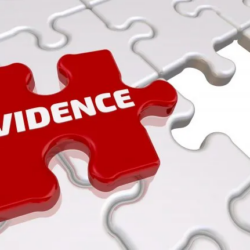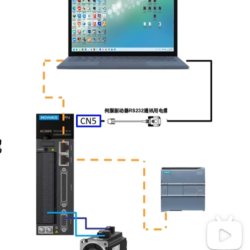In $62 Million, 1st Round, Ternary lithium Battery Patent Wars of Umicore vs. Ronbay, on October 8, 2021, Ronbay announced that it won the first trial of the patent infringement case initiated by Umicore regarding product “lithium nickel cobalt manganate S6503” .
However, on September 16, 2021, Ronbay issued another announcement that Umicore imitated a second patent suit aiming at Ronbay’s NCM811 series products, and demanded a claim of RMB 100 million and the invention patent temporary protection period and reasonable expenses approx. RMB 250 million .
Second Patent Lawsuit
On the evening of September 16, 2021, Ningbo Ronbay New Energy Technology Co., Ltd (Ronbay), the largest domestic leader in ternary lithium cathode materials, issued a lawsuit-related announcement, stating that the company had recently received court summons from Ningbo Intermediate People’s Court regarding the second patent lawsuit filed by Umicore (Belgium). Civil Lawsuit (2021) Zhejiang 02 Zhi Min Chu No. 328.
Umicore alleged that Ronbay S85E type products infringed its patent No. ZL201580030857.0 named “positive electrode material with excellent hardness strength” and requested the court to order Ronbay to stop the infringement and compensate the economic loss of over RMB 100 million, and pay the invention patent temporary protection period and reasonable expenses paid by the plaintiff to stop the infringement, totaling approx. 250 million.
This is the second time in a row that Ronbay has encountered patent claims from Umicore.
On September 26, 2020, Ronbay issued a patent-related announcement with Umicore: the plaintiff claimed that it was the right owner of the invention patent No. ZL201280008003.9 “High nickel cathode material with low soluble alkali content” and considered that the technical features of the defendant’s S6503 product were the same as some of the claims of the plaintiff’s invention patent, and demanded a total of RMB 62 million in damages.
With the two lawsuits, Umicore claimed more than RMB 310 million from Ronbay in total.
Ronbay Korean Elements
Ningbo Ronbay Energy Technology (www.ronbaymat.com) is engaged in the high-tech new energy material industry, specializing in the research and development, production and sales of lithium battery cathode materials. The company was established on September 18, 2014, jointly built by two Chinese and Korean teams.
The company has established long-term cooperative relations with CATL, BYD, LG Chem, Farasis Energy, EVE Energy and other clients. It is the first cathode material manufacturer in China to achieve mass production of NCM811.
On August 31, 2020, Ronbay and Huawei signed a framework cooperation agreement. On April 21, 2021, Ronbay high-nickel cathode project in Korea officially started.
Ronbay’s 2020 annual report showed that the company achieved an annual revenue of RMB 3.795 billion, down 9.43% year-on-year, and net profit attributable to owners of the parent company of 213 million yuan, up 143.73% year-on-year.
The first half-year report of 2021 showed that during the reporting period (January-June), the company achieved operating revenue of 3.592 billion yuan, an increase of 191.69% year-on-year, and net profit attributable to owners of the parent company of RMB 321 million, an increase of 491.36% year-on-year.
This means that the amount of the claim of Umicore to Ronbay exceeded all the net profit of Ronbay in 2020 and is almost equivalent to “eating” all Ronbay net profit in the first half of this year.
From the 143% growth of net profit of Ronbay last year to the 491% growth in the first half of this year, the successive patent lawsuits of Umicore can be said to have put a “sedative” on the “high-speed running” of Ronbay.
Umicore Patent Strategy
This patent litigation combination of Umicore is quite strategic.
Firstly, the in suit S6503 product is not Ronbay key series. According to Ronbay’s announcement, this is related to 622 series ternary cathode materials, sales accounted for 0.0112% and 0.001% of the company’s operating income in January-June 2019 and 2020, respectively.
Then the “battle” escalated to Ronbay’s knock-out product: 811 series cathode materials of S85E type products. According to Ronbay’s 2020 annual report: 2018-2020, NCM811 series shipments CAGR of 94%. 2021 semi-annual report shows: the fastest growth in the ternary system, NCM811, up 276% year-on-year.
Perhaps it is the impact of Umicore’s patent litigation that Ronbay no longer specifically disclosed the production and sales data of specific models of products in its 2020 annual report and 2021 semi-annual report. But from the production data of NCM811 in 2018 shown in Ronbay 2019 KCI prospectus, the NCM811 series accounted for 40% of the production capacity at that time, reaching an annual output of 6,290 tons.
In terms of revenue, in 2018, the revenue of NCM811 accounted for nearly half of the ternary cathode material (48.15%). In recent years, as the demand of the entire downstream manufacturers gradually transformed to high nickel, Ronbay is also eliminating low-end products and making every effort to increase the expansion and revenue share of NCM811.
Therefore, Umicore’s second attack can be described as a “precision strike”.
The first to smell the danger is still the capital market.
On the night of September 16 announcement, Ronbay plunged -9.70%, the share price than the highest point of September 14 has fallen by 18%.
Does this litigation strategy of alerting on a small scale and then gradually escalating the war, indicate Umicore’s attention to reach an agreement with Ronbay through patent suppression?
From the current intensified fight, it is obvious that there is no détente between the two sides.
Umicore Patents
According to the invalidation decision of Umicore’s No. ZL201280008003.9 issued by CNIPA, Ronbay obtained a proper ruling of “partial invalidation”. But after reading the details the only claim of Ronbay invalidated is dependent claim 13. The reason is that the claim used an uncertain term like “NaOH”, and the scope of protection is unclear. All remaining Umicore claims remained valid.
The “industrial grade alkali” defined in Claim 13 of the patent is the upper concept, and the NaOH defined in “like NaOH” is the lower concept. Meanwhile the word “like” herein expresses the meaning of whether or not is uncertain, so that the defined characteristics are in the uncertain state. It is not clear to identify the boundary of the technical solution. Therefore, the technical solutions defined by “like NaOH” and “industrial alkali” cannot be regarded as parallel technical solutions.
This means the risk of infringement of NCM622 has not been lifted.
The new patent usde by Umicore ZL201580030857.0 involving NCM811 infringement, named “positive electrode material with excellent hardness strength” invention, is also made by Korean team. The first inventor Maxime Blangero is the head of Secondary Battery Material Competence Team and has been devoted to the research and development of materials.
[CLAIM 1] A powder for lithium secondary battery positive electrode material, the material has the general formula Li1 + x (Ni1-a-b-cMaM ‘ b ‘ c] 1-xO2-z; M is Mn. doping one or more elements of Zr and Ti, M ‘ is one or more elements of any one of Al, B and Co, M is different from M and M ‘, x, a, b, and c are represented by mol, wherein x is not less than -0.02 and not more than 0.02 and not less than 0, c is not more than 0.05. 0.10 less than or equal to (a + b) is not less than 0.65 and z is not less than 0 and not more than 0.05, and wherein the powdered material has a BET value is less than or equal to 0.37m2/g, Dmax is <50 [mu] m, and for P=200MPa, the rigidity strength index .DELTA.T (P) is not greater than 100 + (1-2a-b) * 160 %, wherein….
An initial review of the claims, it will be a hard fight for Ronbay in the invalidation.
Chinese Companies Concerns
The most concern of many Chinese cathode material companies is whether Umicore’s patent stick will hit them.
From the history of patent litigation initiated by Umicore in the past, it merely sued a catalyst company Apeiron Synthesis in the United States in 2019. It is unaggressive and safe comparing with BASF.
If the dispute is as we suspected in the first article, the patent is just a symptom while both sides may be involved in technical personnel or trade secrets related to “Korean elements”. If that’s the case, the risk of being accused of patent infringement by Umicore will be greatly reduced for other Chinese cathode material companies.
But if Umicore wants to take the opportunity to crack down on China’s leading cathode material company Ronbay, to set an example of other companies engaged in NCM811 cathode materials, such as Pulead, Brunp Recycling, Beijing Easpring, Zhenhua E-chem, etc., the other companies should keep alerted and If necessary, to form a defense alliance and prepare in advance.
Interestingly on the same day when Ronbay announced the second suit, Contemporary Amperex Technology Co., Limited (CATL), the global leader in lithium-ion battery development and manufacturing industry officially announced that it had reached a partnership with BASF and the key area of cooperation is cathode materials.
In the context of China’s surging lithium battery industry, various companies expanded their production capacity and entered overseas market. The confrontations with patent giants like BASF and Umicore are ordeals that Chinese companies cannot bypass. Umicore’s selection of venue in Ningbo where Ronbay is domiciled, is also a test for China’s judicial system.
In recent years, Ningbo Intermediate Court has made remarkable progress in the trial of major intellectual property cases, especially the patent antitrust case of Ningbo Ketian Magnet Co., Ltd. v. Hitachi Metals Anti-monopoly Case which has an extensive international influence.
The Ningbo Intermediate Court deemed the patents“essential facilities” indispensable to competing in the production of sintered neodymium-iron-boron (NdFeB) magnets. They concluded that Hitachi abused its dominance in the licensing market for its own NdFeB patents by refusing to license its patents related to the production of rare earth magnets. In doing so it applied the“essential facilities” doctrine.
Over 100 million patent claims may only be “superficial”, the crackdown on sales network is more deadly.
Founded in 2014, Ronbay became the first company to mass produce high nickel NCM811 in China and obtained a number of high-quality clients such as CATL, Farasis Energy, EVE Energy and SVOLT Energy.
And these companies have a significant number of overseas vehicle clients, BMW, Daimler, Volkswagen, etc. Supposing the upstream suppliers are involved in pending litigations or are convicted of infringement, the downstream pressure is transmitted to Ronbay’s existing sales network.
.png)



.png)






